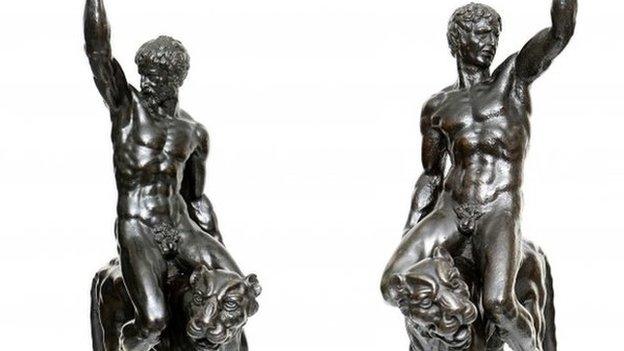Did Michelangelo make these statues?
- Published
- comments
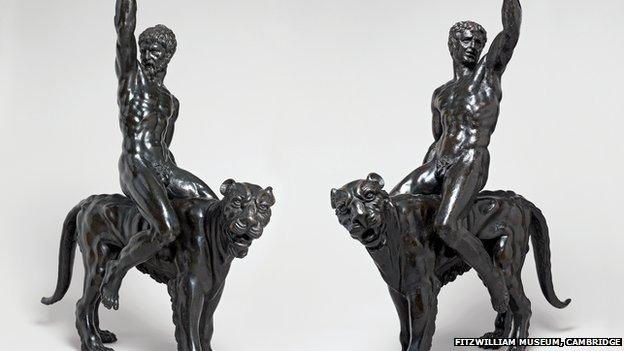
A group of art experts claimed the bronzes were by Michelangelo in February
These two bronze statues are amazing pieces of art. But what if they were created by Michelangelo?
They would then be the only surviving Michelangelo bronzes we know of anywhere in the world. Well, in February that's what a group of art experts claimed, turning some fantastic pieces of art into something very special indeed.
It all caused a bit of splash, external at the time.
But once the art historians put their case forward it doesn't stop there. They've been working to back-up their ideas by talking to experts in the fields of anatomy, metallurgy and even the film world.
They invited us in to see how this whole process works and it has been a fascinating experience.
A team from the Warwick Manufacturing Group took some portable laser scanners down to the Fitzwilliam Museum in Cambridge to create a detailed three dimensional model of the bronzes themselves.
3D computer model created by laser scanning
Digital dissection
This model needed a high level of detail, picking up every flaw and pit in the surface of the statues. This data was then used to recreate an exact model of the bronzes so they could be reproduced by a modern sculptor.
The flaws are important, because while the statues are clearly beautiful, the actual casting of them is pretty poor. We know the bronze in them is very thick and, combined with other problems, this has reduced the amount of detail, particularly around the heads.
Meanwhile experts from the University of Warwick medical school have examined the anatomy of the statues.
We know Michelangelo would dissect corpses to study them, and the statues reveal a knowledge of the structures of the human body that you can only get by opening one up.
Interestingly there are some back muscles that are not quite correct, perhaps because a corpse laid on its back in a warm country like Italy would quickly liquefy where it was under pressure, leaving little chance to study the back in any detail.
Also the pubic hair is represented in a stylised but still more realistic "tufty" style favoured by Michelangelo perhaps drawing from real life. Other artists of the time tended to present it looking more trimmed, copying the style of the living athletes they had to model for them.
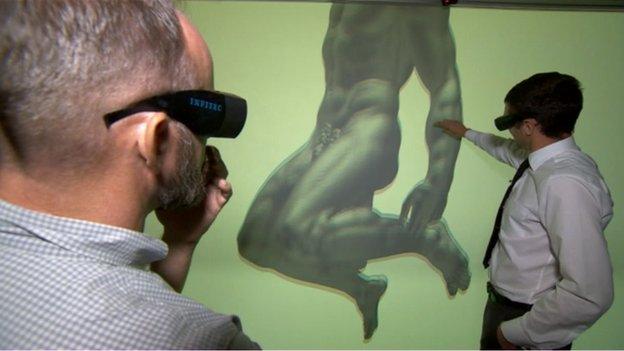
Dr Richard Tunstall from the University of Warwick medical school examined the anatomy of the statues
Remaking the bronzes
At the University of Birmingham they have taken moving x-rays of smaller versions of the bronzes as they were actually being cast. It allows them to see how the liquid metal behaves as it flows into the mould allowing an archaeo-metallurgy expert to work backwards and discover exactly how these bronzes were cast.
The final stage was to actually remake the bronzes, using a cast taken from Warwick's 3D model, which was printed out by the Propshop at Pinewood Studios.
It allowed the team to replicate the method and even the problems the original bronze casters faced.
What all this allows is to narrow down the time period when these bronzes could have been made. All the evidence points to them being cast in the early 16th Century.
It was a time when we had trouble making bells and cannons, let alone delicate metal sculptures - a time period that puts Michelangelo firmly in the frame.
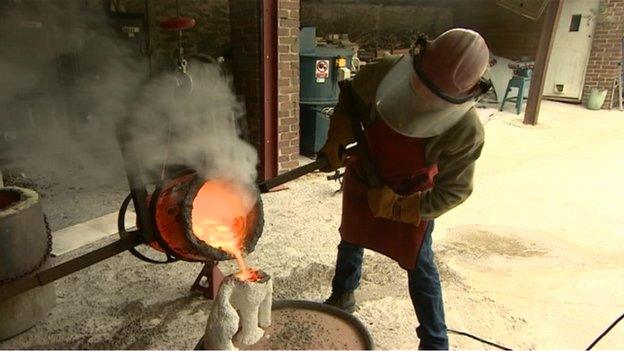
Imitation statues were cast by Andrew Lacey to understand how the originals were made
To get 100% proof you would like a letter to turn up, signed Michelangelo, talking about these figures with a small sketch attached.
But in the real world it is this painstaking gathering of evidence by people from a huge variety of different disciplines that all helps build the case.
This work will be announced to the world at a conference in Cambridge later. If you want to make up your own mind you can see the bronzes in Cambridge's Fitzwilliam Museum, external.
- Published3 February 2015

- Published2 February 2015
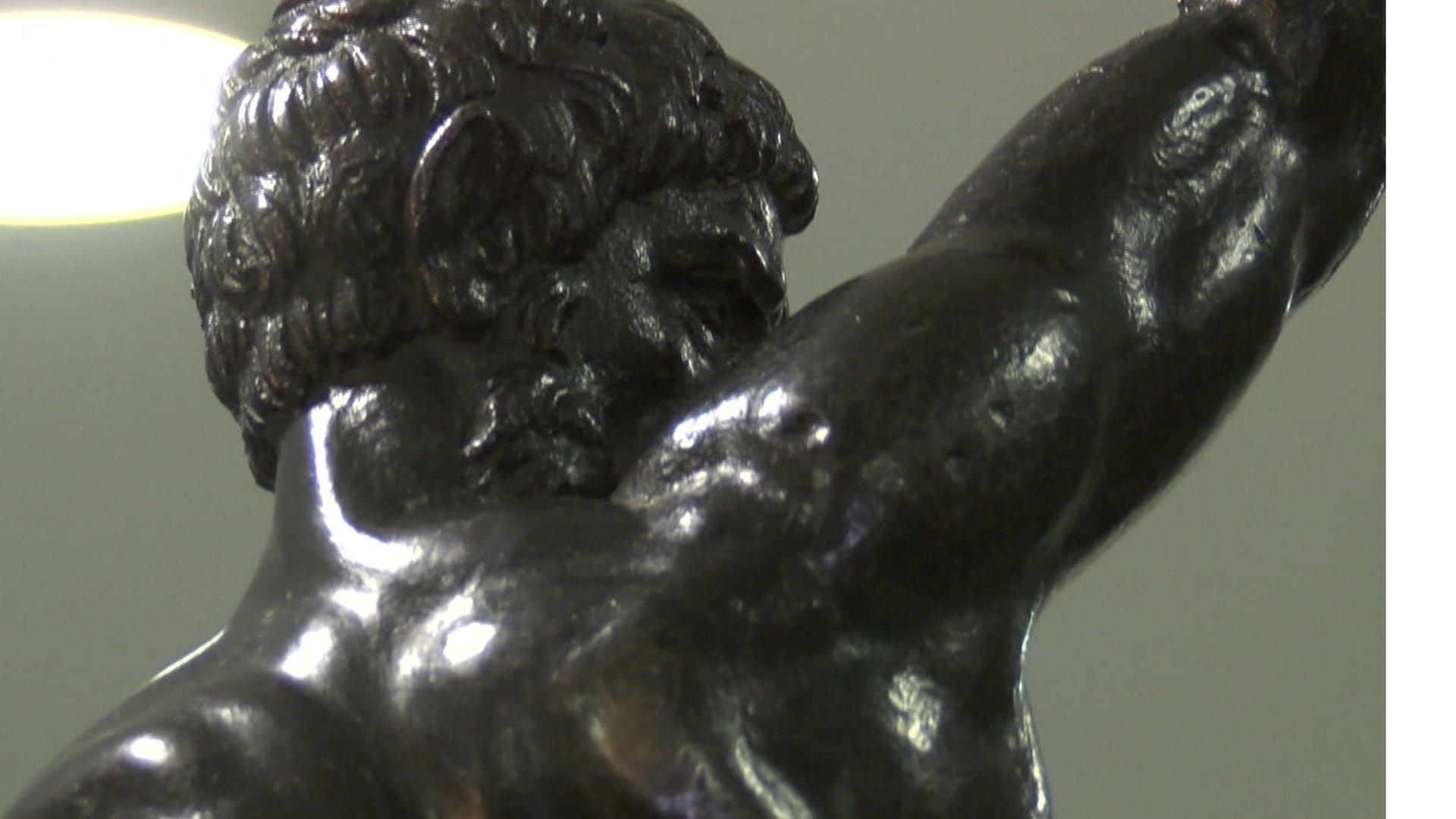
- Published2 February 2015
